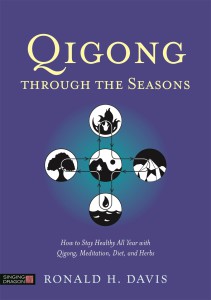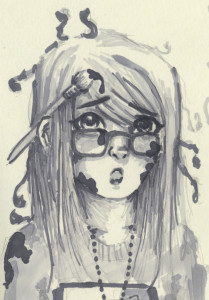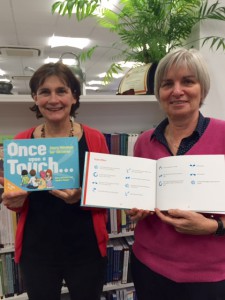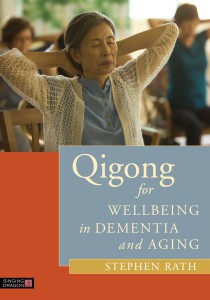#QigongFestival2016
by Ronald H. Davis
Summer energy urges us to get moving. We want to be outside more often, we wear fewer clothes and yearn to be in closer contact with nature. We like to spend time in joyful physical recreation and gatherings with friends. During this season of shining fire, the energy of nature grows outward with color, warmth, and radiance. As our Spirit comes alive with expansive awareness, it wants to make intimate contact with all the elements of heaven and earth.
According to the Five Phase (Element) paradigm of Chinese medicine, summer is the Fire Phase of annual changes the season when our Heart Qi naturally comes into full bloom with expressions of joy, compassion and a mysterious longing for divine contact. The exuberance of Fire, when carefully cultivated, can be refined and directed toward the ultimate human purpose of spiritual awakening. However, if not properly harnessed, summer’s blazing Supreme Yang Qi can scorch our hearts and minds. Summer Qigong practice will show you how to feed the heart network without getting burned.
Heart Network
The major physical and mental correlations for the heart network include but are not limited to: the heart and small intestine, blood and vessels, tongue, perspiration, intuition and compassion. The functions of this group have some degree of warmth, movement or communication. A more specific and very crucial energetic function of the heart is to nurture the HeartMind in the ‘middle dan tian’. The dan tians are regions of the body where qi energy is stored, refined and transformed (please see Qigong Through The Seasons for detailed information on these essential components of the energetic body).
HeartMind
Our capacity for expressing positive human values comes from the xin, often translated as HeartMind, a compound word implying that the heart’s emotional knowledge combines with the mind’s rational thinking to give us a uniquely human perception of the world. When our actions are appropriate to the situation, considerate of others, and done with good intentions the HeartMind is vibrant and lovingly engaged with the world.
The HeartMind must be carefully nurtured if we want to follow the path of spiritual awakening. The HeartMind develops from the joining of liver blood and heart qi in the middle dan tian. We deliberately cultivated that energy field with Spring Qigong practice. Now in summer we should continue to elevate the vitalized blood and enriched qi to achieve higher realms of consciousness where we live beyond the restraints of egocentric thoughts and behavior, thus experiencing the full flowering of human fellowship and divine nourishment. When properly done, qigong and meditation practice will transform the HeartMind into Spirit, which then ascends to reside in the upper dan tian. With further dedicated practice the Spirit comes awake and we dwell in a world of serene selflessness.
Meditations
The Summer Qigong Practice includes two meditations for refreshing the five major internal organs and for nourishing the HeartMind. In the “Colors of Health” meditation you visualize infusing the heart, lungs, liver, spleen, and kidneys with specific colors. This gentle placement of luminous energy into the organs is accompanied with feelings of kindness and gratitude for the essential work those organs do to keep you healthy.
The “Sunflower” meditation is focused on visualizing a sunflower brightly blooming in the middle dan tian while you smile inwardly (as you did in the Colors of Health meditation) to evoke the feeling of loving kindness for yourself and for all others. This powerfully simple meditation can instill a state of deep contentment, centeredness, and being at peace with the way things are.
Foods, Flavors, and Herbs
The bitter flavor is closely identified with the Fire Phase and the heart. Bitter foods and herbs will cool heat, clear blood stagnation and correct excessively damp conditions. Bitter will benefit those individuals who are too watery, lethargic, or overweight as well as those who are too hot, aggressive or scattered. Some common bitter foods: romaine lettuce, bok choy, radicchio, and celery. Many foods are a combination of bitter and other flavors: Bitter and Sweet: asparagus, most lettuce, papaya, quinoa. Bitter and Pungent: citrus peel, radish, scallion, turnip, white pepper. Bitter and Sour: vinegar. A healthy diet will include some degree of bitter foods based on personal taste and availability. Garlic and Hawthorn are two very beneficial herbs for the cardiovascular system. Usage of all herbs should be done with the guidance of a qualified herbalist.
Qigong
The aim of the first three exercises in Summer Qigong is ambitious: to gather yang energy from the universe and yin energy from the earth and bring that into the body’s energetic field. The goal is to refine qi so that our Spirit becomes totally connected to all aspects of heaven and earth. The fourth exercise is Heart Qigong which is the most essential practice for the Fire Phase. It opens the three dan tians, promotes qi flow through the taiji axis, and expands our capacities for universal love, selflessness, and communication. Heart Qigong is a beautifully rhythmic exercise; many people experience a free flowing energy after practicing only a short time. It seamlessly combines the three aspects of qigong: movement, breathing, intention. These four exercises are amply explained and nicely illustrated in the except that follows this article.
The first five chapters of Qigong Through The Seasons are important to understand the theories and research behind this seasonal practice, especially the sections on Chronobiology, the Five Phases, and Diet. Take your time absorbing the principles and practices presented in this book. The training and dietary suggestions have inherent variety and emphasis for each season, this keeps your fitness routine exciting, fresh, and naturally healthy.
To find out more about Qigong Through the Seasons by Ronald H. Davis, click below.





